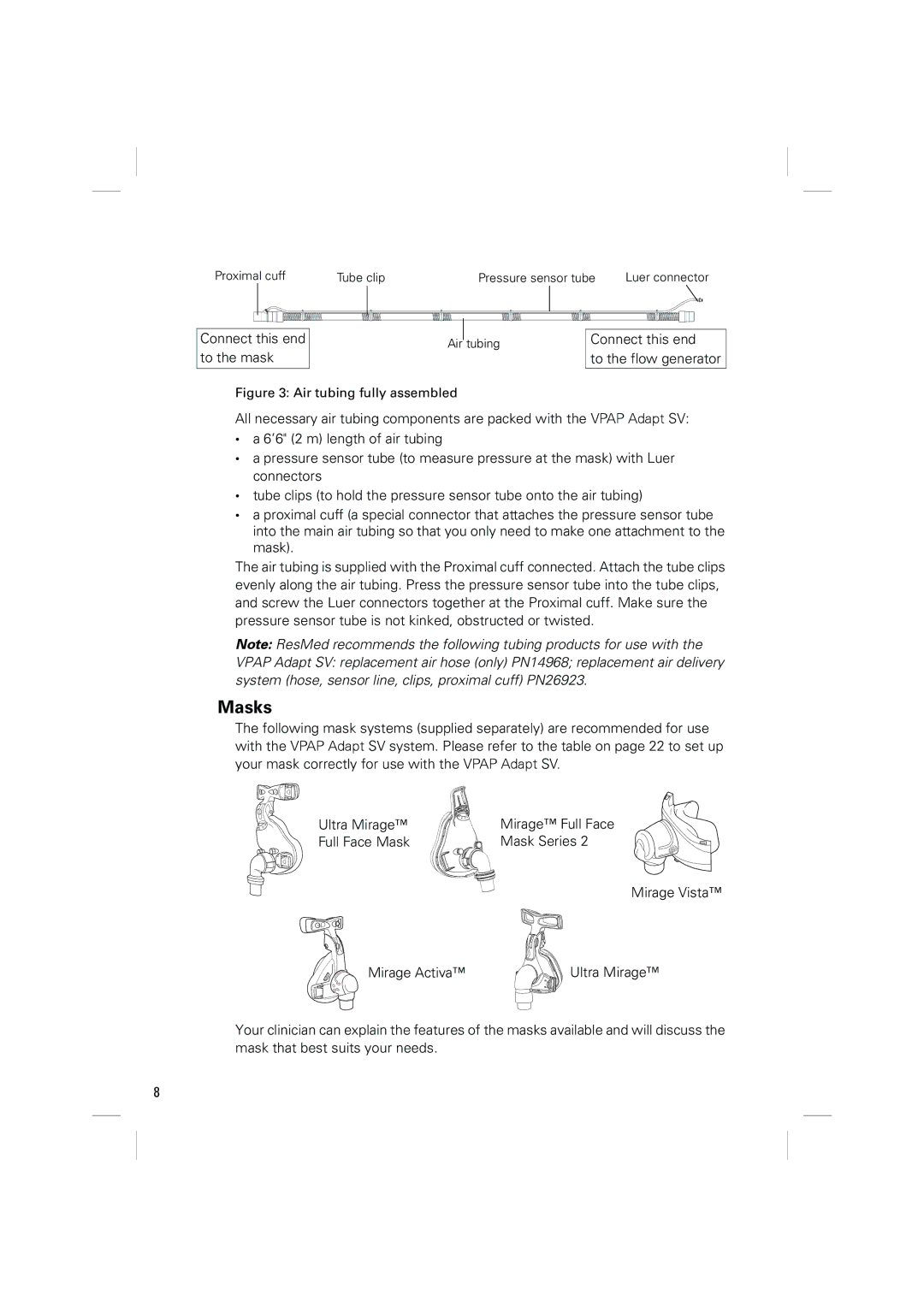
Proximal cuff
Connect this end to the mask
Tube clipPressure sensor tube Luer connector
|
|
|
|
|
|
|
|
|
|
|
|
|
|
|
|
|
|
|
|
|
|
|
|
|
|
|
|
|
|
|
|
|
|
|
|
|
|
|
|
|
|
Air |
| tubing | Connect this end | ||||||||||
| |||||||||||||
|
|
|
|
|
|
| to the flow generator | ||||||
Figure 3: Air tubing fully assembled
All necessary air tubing components are packed with the VPAP Adapt SV:
•a 6’6" (2 m) length of air tubing
•a pressure sensor tube (to measure pressure at the mask) with Luer connectors
•tube clips (to hold the pressure sensor tube onto the air tubing)
•a proximal cuff (a special connector that attaches the pressure sensor tube into the main air tubing so that you only need to make one attachment to the mask).
The air tubing is supplied with the Proximal cuff connected. Attach the tube clips evenly along the air tubing. Press the pressure sensor tube into the tube clips, and screw the Luer connectors together at the Proximal cuff. Make sure the pressure sensor tube is not kinked, obstructed or twisted.
Note: ResMed recommends the following tubing products for use with the
VPAP Adapt SV: replacement air hose (only) PN14968; replacement air delivery system (hose, sensor line, clips, proximal cuff) PN26923.
Masks
The following mask systems (supplied separately) are recommended for use with the VPAP Adapt SV system. Please refer to the table on page 22 to set up your mask correctly for use with the VPAP Adapt SV.
Ultra Mirage™ | Mirage™ Full Face |
Full Face Mask | Mask Series 2 |
Mirage Vista™
Mirage Activa™ | Ultra Mirage™ |
Your clinician can explain the features of the masks available and will discuss the mask that best suits your needs.
8
